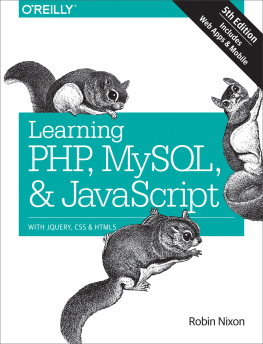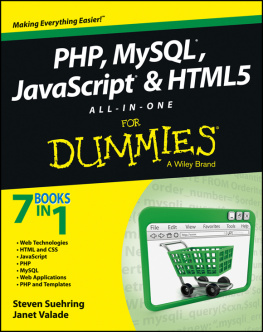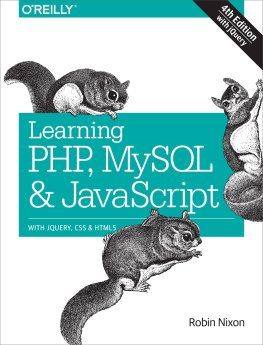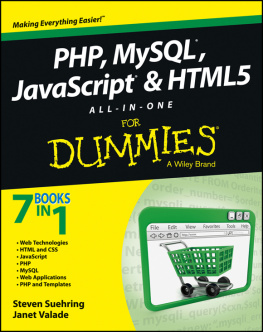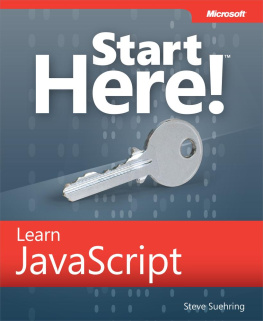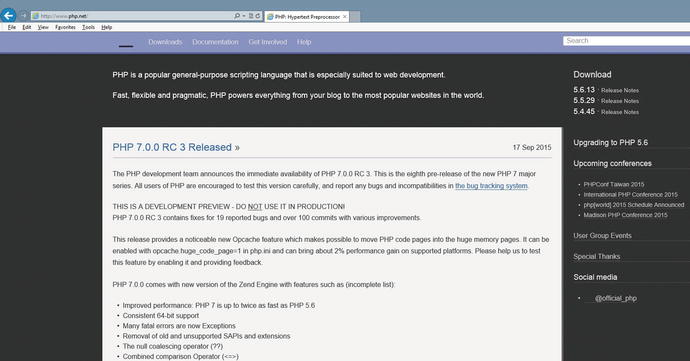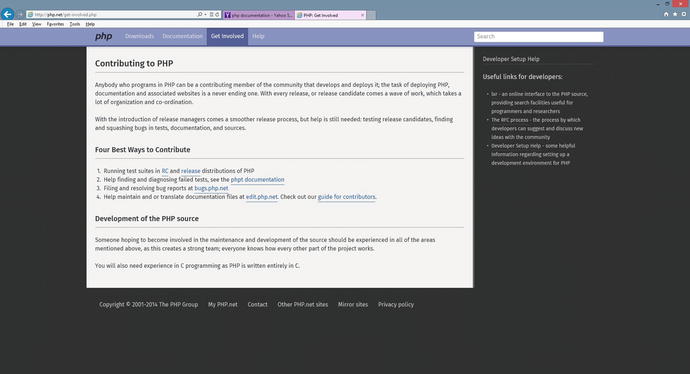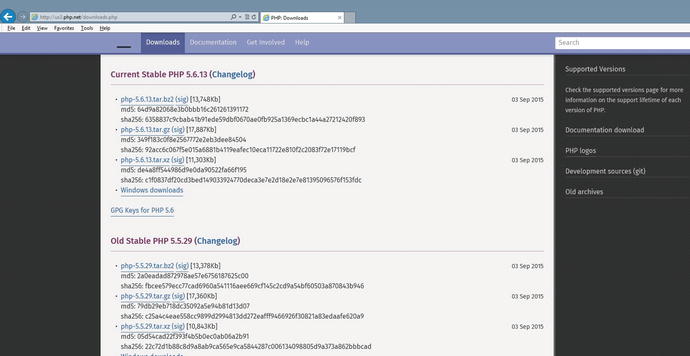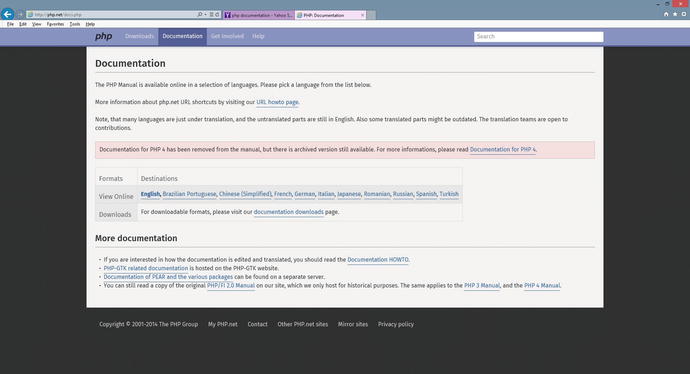PHP is a popular general - purpose scripting language that is especially suited to web development. Fast , flexible , and pragmatic , PHP powers everything from your blog to the most popular web sites in the world . www . php . net
PHP 5.5+, PHP 7+, and PHP.NET
Today, PHP (Hypertext Preprocessor) is one of the most popular languages used for web application development. The language has evolved to allow the programmer to quickly develop well-formed error-free programs using both procedural and objected-oriented programming techniques. It provides the ability to use many preexisting libraries of code that either come with the basic installation or can be installed within the PHP environment. This gives you multiple ways to complete a particular task. It provides more flexibility than many other languages. The ease with which additional libraries of code can be added to the environment is one of the many driving forces in its popularity.
Procedural language A procedural programming language includes functions/methods that can be called from the main flow of the program . The flow of the program jumps to the function / method , executes the code within the module , and then returns to the next statement in the main flow of the program. Some Procedural languages include a main function / method that automatically is called when the program is executed .
Object - oriented language An object - oriented language uses classes and objects. Classes are similar to blue prints. A class describes what an object can contain , including properties / variables and functions / methods. An object is an instance of a class ( like a building that has been created from a blueprint ). Object - oriented languages provide polymorphism , encapsulation , and inheritance. Objects are naturally encapsulated by containing all related functions / methods and properties / variables within the object itself. Polymorphism allows duplicate method / function names within object - oriented objects. However , the signature must be different. The signature is the combination of the types of variables ( numbers and characters ) passed into the method / function and the type of information passed out of a method / function. For example , several add methods could be created one that only accepts integers ( whole numbers ), one that only accepts floating point numbers ( numbers with decimals ), and one that accepts a combination. The program will determine which method / function to call by what has been passed into the method / function. Inheritance in object - oriented programming allows an object to inherit properties / variables and functions / methods from another object. The object can also override those items inherited. This is similar to a child inheriting characteristics from the parents. Object - oriented languages can also be event - driven. An event - driven program will sleep until an event occurs. This is similar to an ATM machine program waiting for a user to input an ATM card .
PHP is an open source language. As such, each version of the language is created using input from the individuals who use itthe programmers themselves. This allows the language, over time, to evolve and float into the direction that is driven by the users. From its first release in 1995 as a Personal Home Page Tool (PHP) by Rasmus Lerdorf, the versions have been released on the Internet with forums to provide users the ability to make suggestions and even provide code changes and additions. Today www.php.net is the official PHP web site.
Open source language An open source programming language is developed by a community of interested parties. The community accepts input from fellow programmers for suggested upgrades and corrections. Several members of the community work together to present proposals and to make changes to the language. Open source languages are free . A non - open source language ( such as Microsoft C #) is created and updated by a company or major organization. Non - open source languages are not usually free .
Figure 1-1.
PHP.NET (09/24/15)
The www.php.net home page provides information on each of the latest releases of the language. It also provides information on future releases, the features planned for those releases, and the planned release dates. In addition, other related PHP information can be found, including links and information to major PHP conferences.
Figure 1-2.
Get involved (09/24/15)
As mentioned, this site provides the ability for users to help with the future development of the language. Users can get involved with testing beta versions and reporting errors or program bugs. Visitors can also view documentation related to the development of possible future versions. This is a good way of discovering future enhancements or security fixes before major announcements have been made to the public.
Figure 1-3.
Download page (09/24/15)
The download page, as you might have guessed, provides the ability to gain easy access to the latest versions of the language. However, as you will note, only the language itself is provided. It is more common, and recommended, that the beginning user use a WAMP (Windows, Apache, MySQL, PHP); LAMP (Linux, Apache, MySQL, PHP); or MAMP (Mac, Apache, MySQL, PHP) package for initial installation. These packages (which we will look at later) allow for easy installation of multiple products at the same time. Otherwise, you have to run many separate installations, which can become complicated and error-prone if incompatible versions are installed.
Figure 1-4.
Documentation pages (09/24/15)
WAMP / LAMP / MAMP Open source ( free ) combinations , including Apache Web Server , MySQL , and PHP for a specific operating system ( Windows , Linux , and Mac ). These packages are open source. The combination of software is used for creating dynamic web sites and web applications .
One of the more important pages of the PHP web site is the documentation page. This page allows users to search for descriptions and functionality of the language itself. You can also download the complete documentation. However, since this is a live site, with possible changes occurring, the most current information is best obtained by directly accessing it from the web site.


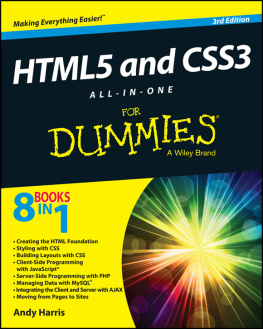

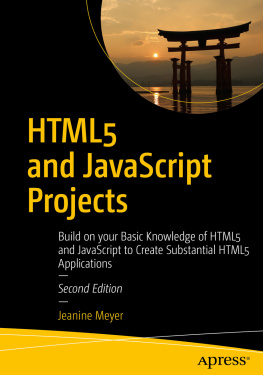
![Jeanine Meyer [Jeanine Meyer] - HTML5 and JavaScript Projects: Build on your Basic Knowledge of HTML5 and JavaScript to Create Substantial HTML5 Applications](/uploads/posts/book/120565/thumbs/jeanine-meyer-jeanine-meyer-html5-and.jpg)
